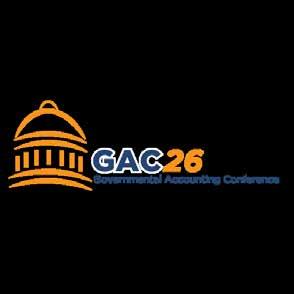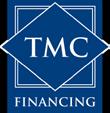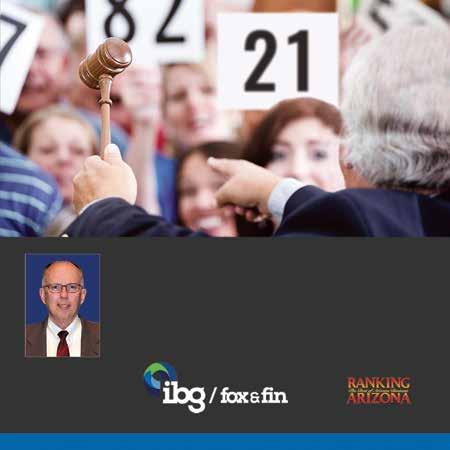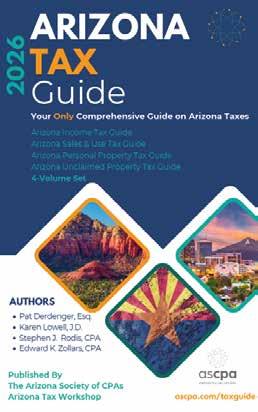Edward K. Zollars, CPA

Seibel,



Edward K. Zollars, CPA

Seibel,


Leave the IT management and cybersecurity to us so you can focus on running your firm.
With over 20 years of experience supporting CPA firms, SimplifyIT A-Z creates secure, reliable, and compliant technology environments. We handle IT so your team can stay focused on clients and growth while reducing costs by nearly 50% compared to in-house IT.


Scan for a Free IT Consultation. Let us review your systems to ensure they’re secure, compliant, and helping your firm grow.
Stay Informed. Sign up for our monthly newsletter.
Fady Salama, Owner Fady Salama, Owner

School, or Military Service
of Service Hours Provided to the Community Through Arizona Tax Credits and traditional donations, underserved families can access quality education that best meets the unique needs of their children.
1. AZ Individual Tax Credits
Redirect your AZ tax liability to CEA and receive a dollar-for-dollar tax credit! Tax Credit contributions are used exclusively for tuition scholarships at K-12 Diocese of Phoenix Catholic Schools.







Join us for Free CPE Days on November 12 & 13, and seize the chance to earn up to 12 hours of free CPE! Don’t miss out!
The Arizona Society of Certified Public Accountants
President & CEO Oliver Yandle
Editor Rosa Hernandez
Advertising Cynthia Quinonez
Board of Directors
Chair Eugene Park
Chair-Elect Joe Heidleburg
Secretary/Treasurer Lisa Parke
Directors Tahir Alhassan
Daliah Bui
Nate Eggman
Jay Ganesan
Marissa Graves
Jessica Iennarella
Malia James
Sarah Lauzon-Jones
Donnie Neves
Coulson Painter
Anne Rogers
Helen Stewart
Immediate Past Chair Lauren Murro
AICPA Council Members Kelly Damron
Tom Duensing
AZ CPA Editorial Committee
Alli Byrne, Andrea Levy, Ashlea Perron
Becky Pusch, Jennifer Greening
Mike Nyman, Ted Bartlett
REGISTER FOR FREE CPE DAYS
NOV. 12 & 13
REGISTER FOR FREE CPE DAYS NOV. 12 &

We will be raffling off prizes on Connect . Stay tuned for your chance to win! Connect: www.ascpa .com/connect www ascpa com/freecpedays25
Contribute to the AZ CPA
Do you have an area of expertise? Do you enjoy writing? Reach out to our Communications Manager, Rosa Hernandez at rhernandez@ascpa.com if you want to contribute to the magazine.
AZ CPA is published by the Arizona Society of Certified Public Accountants (ASCPA) to provide information, news and trends to the accounting profession. It is distributed six times a year as a benefit to ASCPA members. The ASCPA, its members, board of directors and administrative staff assume no responsibility for advertisements herein. The ASCPA and the above people also assume no liability for business decisions made by readers in reference to statements and/or claims in articles or advertisements within this publication. Opinions expressed by contributors are not necessarily those of the ASCPA.
Arizona Society of CPAs
410 N. 44th St. Ste 205 Phoenix, AZ 85008
Telephone (602) 252-4144
AZ Toll-Free (888) 237-0700 www.ascpa.com



Eugene Park, CPA Chair, Arizona Society of CPAs
Consulting Partner
Heinfeld, Meech & Co., P.C.
During our strategic planning session last fall, one word kept surfacing in nearly every conversation among the ASCPA board of directors: engagement. It’s a word that keeps popping up – not just in our recent initiatives, but in how the ASCPA is starting to redefine itself.
For many years, the ASCPA has been a trusted resource for continuing professional education (CPE), helping members meet their biannual licensing requirements. This service has been essential – allowing CPAs to stay current, compliant and confident in their professional knowledge. But for a long time, it felt procedural. A box to check. A task to complete.
What we’ve seen more recently, however, is a shift. While CPE remains a cornerstone of our offerings, the ASCPA has begun to prioritize becoming a community-centered organization – one that values connection, collaboration and engagement. This transformation has been both intentional and inspiring.
Serving on the board has given me the opportunity to meet CPAs from all corners of the state – professionals I might never have encountered otherwise. These interactions have reminded me just how diverse and dynamic our profession truly is. We come from different backgrounds, industries and career stages, but we share a common goal: to grow, to serve and to support one another.
Interestingly, this idea of community came up in a recent interview I conducted with a former intern who was applying for a full-time position at our firm. When I asked what she was looking for in her next role, she said she wanted to find a workplace that offered a true sense of community – something she felt had been missing in her previous experiences. That word stuck with me. It sparked a reflection on how the board has consistently emphasized the importance of building community through engagement and how central that idea has become to our direction moving forward.
Community doesn’t happen by accident. It’s built through intentional engagement – by showing up, participating and investing in one another. And that’s exactly what so many of you have done. Whether you’ve attended an ASCPA event, contributed to a discussion on Connect, volunteered your time or simply reached out to a fellow member, you’ve helped create something meaningful.
This renewed focus on engagement has made the ASCPA feel more personal, more connected and more reflective of the values we hold as professionals. It’s no longer just about meeting requirements – it’s about building relationships, sharing knowledge and creating a space where every CPA feels seen and supported.
To all of you who have engaged with the ASCPA – not just to fulfill requirements, but to build relationships and strengthen our collective voice – thank you. Your involvement is what makes this organization thrive. You are helping to shape a more connected, inclusive and resilient CPA community across Arizona.
As we look ahead, I encourage each of you to continue leaning into engagement. Attend that event you’ve been curious about. Join a committee. Start a conversation. The more we connect, the stronger we become – not just as professionals, but as people.
Let’s continue to engage, connect and grow – together. l
Warm Regards, Eugene Park
DRS Accounting Services led by Cristen Quackenbush, CPA, has rebranded as Numera Insight.
Emily L. Mead, CPA, a tax senior at Wallace Plese + Dreher, earned her CPA license.
Haynie & Company has been recognized again as one of the Top 100 Accounting Firms in the nation by INSIDE Public Accounting.
Kaitlyn Hirakawa, CPA, from Wallace Plese + Dreher, earned her CPA license.
Taylor Douglas Waslaski, CPA, was promoted to tax manager at Wallace Plese + Dreher
BeachFleischman was named one of the 2025 Best Mid-Sized and Large Firms to Work For by Accounting Today.
SimplifyIT A-Z is now a preferred provider of managed IT services for the ASCPA.

We’re back! ASCPA’s Governmental Accounting Virtual Conference is where top experts deliver essential insights on public finance, cybersecurity and economic trends to elevate your organization’s performance
Friday, February 6, 2026
8 a.m. - 4:30 p.m.
Live Online Webcast
www ascpa com/gac
*Register by December 31 to save $50 *


Keep up with the CPA community, events and special offers by following us on LinkedIn and Facebook @Arizona Society of CPAs. Need less promotion and more fun? Instagram is your jam – follow us @arizonacpas



By Edward K. Zollars, CPA, Thomas, Zollars & Lynch, Ltd.
On July 4, 2025 the President signed into law HR 1 (Public Law 119-21), better known as the One Big Beautiful Bill Act (OBBBA). The law contained a number of tax provisions, some of which take effect immediately while others will take effect in the future.
Continued on next page...
A primary goal of the Act was to make permanent a number of provisions enacted as part of the 2017’s major tax bill generally referred to as the Tax Cuts and Jobs Act (TCJA). Many of these provisions were scheduled to expire at the end of 2025. Items were extended – some with minor changes, including:
• Individual income tax rates, with a maximum rate of 37%.
• The increased standard deduction is increased slightly more and made permanent.
• The TCJA expanded version of the child tax credit.
• The elimination of a deduction for dependent exemptions.
• The increased AMT exemption amount.
• The §199A qualified business income deduction.
• Elimination of the deduction for miscellaneous itemized deductions.
• Estate and gift tax exemption increased to $15,000,000 (adjusted for inflation) beginning in 2026.
The limitation on the deduction of most state and local taxes on Form 1040 is extended, but with a temporary increase in the deduction to $40,000, increased by 1% each year, for 2025-29. The increased deduction is phased out for taxpayers with modified adjusted gross income in excess of $500,000, eventually phasing down to the TCJA $10,000 limit. In 2030 the limit returns to its $10,000 limit for all individual taxpayers.
No changes were made to the deduction for state passthrough entity taxes, including the Arizona variant. Business Income Tax
Modifications
A number of changes were made to business income tax provisions. Some of the more significant are discussed below.
• Bonus Depreciation: Bonus depreciation is set at 100% for
property acquired after January 19, 2025. Any property for which the taxpayer had a binding agreement to acquire on or before January 19, 2025 will be treated as acquired before that date.
• Domestic Research & Experimental Expenses: The ability to expense research and experimental expenses returns to the law, partially repealing changes made by TCJA. For years beginning after December 31, 2024, the full costs incurred for domestic research and experimental expenditures can be expensed immediately, though foreign research and experimental expenditures will continue to be amortized over 15 years. Special rules apply to recover domestic expenses incurred in prior years that were required to be amortized over 5 years, with qualified small businesses also having a limited time option to amend returns for prior years to expense these items in those years in lieu of the standard recovery options under the law.
• Business Interest Deduction (§163(j)): For tax years beginning after December 31, 2024, the calculation of adjusted taxable income (ATI) for the deduction of business interest under IRC §163(j) goes back to a computation of income before interest, taxes, depreciation, amortization and depletion. In recent years ATI had been calculated without allowing the exclusion for depreciation, amortization and depletion.
• 100% Depreciation Deduction for Qualified Production Property: A new 100% short term depreciation deduction for certain 39 year property was added by the OBBBA. The deduction is allowed for qualified production property which is defined using terms very similar to those that applied to the pre-TCJA qualified domestic production deduction under old IRC §199. Construction on such
property must have begun after January 19, 2025, and before January 1, 2029, with the property placed in service before January 1, 2031.
A number of other business provisions were also enacted as part of the Act.
Some key individual income tax benefits were added by the OBBBA. A number of these benefits are implemented as deductions which can be claimed regardless of whether or not the individual itemizes deductions for years 2025-29. However, despite many erroneous reports to the contrary, these deductions will not reduce a taxpayer’s adjusted gross income. Thus, they don’t impact things like IRMAA for determining a taxpayer’s Medicare premiums or the amount of premium tax credit a taxpayer qualifies for. Rather these deductions will join the deduction for qualified business income under IRC §199A on the new 2025 Schedule 1A (Form 1040), deducted just above the line now used solely for the §199A deduction on 2024 and earlier returns.
• Qualified tips: A maximum of $25,000 of qualified tips can be deducted on a tax return. The deduction begins to phase out as a taxpayer’s modified adjusted gross income exceeds $150,000 ($300,000 for a joint return). The tips must be earned by a taxpayer in an industry found on a list to be provided by Treasury and not earned in a business that is a specified service trade or business (SSTB). Married taxpayers can only claim this deduction if the couple files a joint return.
• Overtime: A deduction of up to $12,500 ($25,000 for joint returns) is allowed for the amount to a taxpayer in excess of their standard compensation rate for qualified overtime. Thus, someone normally paid $20 per
hour who works qualified overtime that is compensated at $30 per hour would exclude $10 (the excess). The overtime must be paid under the Federal Fair Labor Standards Act of 1938 at the rate required by that Act and cannot include qualified tips. The deduction phases out beginning at the same income levels as the qualified tips deduction. Again, married couples must file a joint return for this deduction to be claimed.
• Over 65 Deduction: The law does not contain an exclusion of social security benefits from a taxpayer’s income but rather gives a new deduction available for taxpayers over age 65 as of the end of the tax year, whether or not they are yet receiving social security benefits. That deduction is $6,000 per individual (so potentially $12,000 for a married couple filing a joint return). The
deduction phases out beginning at income level of $75,000 ($150,000 for a married couple filing a joint return). Married taxpayers must file a joint return to claim this deduction.
• New Car Interest Deduction: For cars with final assembly in the United States acquired after December 31, 2024, a deduction is allowed for up to $10,000 on interest paid on a loan secured by the car and used to acquire the car. The deduction phases out as the taxpayer’s income rises above $100,000 ($200,000 on a joint return). Married taxpayers must file a joint return to claim this deduction.
Also added for individuals are new Trump Accounts designed for savings for individuals under age 18. These accounts are generally based on traditional IRAs, but do not require the child to have earned income for contributions to be made to the
account. The maximum contribution per year (aside from pilot program payments and those from employers under qualified programs) is $5,000. For children born in 2025-28 a pilot program provides for a $1,000 payment to be made to an account in their name.
This discussion only covers highlights of this bill—there are many other provisions that may impact your clients you will need to consider.
For more tax updates, sign up for the Arizona Tax Workshop (ATW) at www.ascpa.com/atw to learn about developments in federal, state and local taxes through court cases and legislation. For an in-depth look at tax issues through an interactive session with Ed Zollars sign up for Tax Tuesday at www.ascpa.com/ taxtuesday l
Edward K. Zollars, CPA, is a partner in the Phoenix CPA firm of Thomas, Zollars & Lynch, Ltd. as well as writing and presenting continuing education programs for CPAs on tax matters.








By David Seibel, EA
When the IRS released Revenue Procedure 2025-28, much of the initial focus was on its clarification for eligible small businesses electing to expense their 2022-24 Section 174A research or experimental (R&E) expenditures. Specifically, the guidance confirmed that 2024 returns on extension may fully deduct R&E expenses without requiring an amended return.
But the guidance extends well beyond that single issue. For CPA firms, two additional areas carry significant implications as you plan with clients: the treatment of Section 280C elections and the option for accelerated deductions in 2025 and 2026.
Section 280C Guidance in Rev. Proc. 2025-28
Revenue Procedure 2025-28 confirms that the Section 280C rules depend on whether taxpayers are amortizing under Section 174 as amended by the Tax Cuts and Jobs Act (TCJA) or fully expensing their Section 174A costs:
2022-24 (TCJA 280C rules): Under the TCJA, Section 280C was modified so that taxpayers had to either:
• Reduce their R&E capital account by the amount the R&D Credit exceeded the R&E deductions for the year, or
• Elect a reduced credit under Section 280C.
Because of the amortization rules in place during these years, making the 280C election to take a reduced credit was often not advantageous.
2025 and forward (original 280C rules reinstated): With R&D expensing restored, Section 280C reverts to its original treatment. Taxpayers who claim the R&D Credit must choose between:
• Taking the full credit and reducing their R&E deduction by the same amount, or
• Electing 280C which provides a reduced credit but avoids any adjustment to the deduction. For many taxpayers, making the 280C election will once again be the more advantageous option.
• Small business exception: Eligible taxpayers retroactively expensing 2022-24 costs under the One Big Beautiful Bill Act (OBBBA) are subject to the original 280C rules, but they are allowed to make a late 280C election via a simple attached statement. They may also revoke a 280C election that was made during those years.
This nuance is critical: firms helping clients evaluate whether to amend 2022-24 returns must also assess whether making (or revoking) a 280C election strengthens their overall tax position.
For taxpayers not electing the small business option, Revenue Procedure 2025-28 outlines how deductions for remaining unamortized 174 costs from 2022-24 can be accelerated:
• Deduct the balance in full in 2025, or
• Evenly spread the deduction over 2025 and 2026.
Importantly, this too can be accomplished with a statement in lieu of Form 3115, reducing administrative burdens. This creates a planning opportunity for taxpayers who don’t qualify under the $31 million gross receipts threshold or don’t want to amend returns but still want relief from multi-year amortization.
The release of Revenue Procedure 2025-28 puts CPAs in the driver’s seat when advising clients on R&D expensing strategy. Key considerations include:
• Amend vs. Accelerate: Does it make more sense to amend 2022-24 returns under the small business election, or to take the accelerated deduction beginning in 2025?
• 280C Elections: Will making a late 280C election or revoking an existing 280C election improve your client’s tax position?
• Refund Timing: Is your client better served by pursuing refunds through amendments, or waiting to capture accelerated deductions in 2025?
• State and Ownership Factors: Do shareholder changes, state conformity, or refund delays make one path more attractive than another?
Revenue Procedure 2025-28 provides more than just relief for small businesses – it reshapes the planning landscape for all taxpayers with R&E costs. For CPAs, the challenge is no longer what the law requires, but what strategy makes the most sense for each client. l
David Seibel, EA, is a Shareholder in McGuire Sponsel’s R&D Tax Credit Practice. McGuire Sponsel partners with more than 500 CPA firms nationwide to deliver specialty tax consulting services that strengthen client relationships and drive value. David can be reached at dseibel@ mcguiresponsel.com or 317.564.5009.

Member Benefit Provider
Trusted by accounting industry professionals nationwide, 8am™ CPACharge is a simple, web-based solution that allows you to securely accept client credit and eCheck payments from anywhere. – Cantor Forensic Accounting, PLLC 8am CPACharge has made it easy and inexpensive to accept payments via credit card. I’m getting paid faster, and clients are able to pay their bills with no hassles.

increase in cash flow with online payments of consumers prefer to pay electronically of bills sent online are paid in 24 hours

Provides scholarships for K-12 students to attend private schools in Arizona. Funded by Arizona’s Individual Private School Tax Credit.














Supports low-income students with essential school-related needs. Funded by Arizona’s QCO Tax Credit. EIN: #93-1967631 AZ QCO: #22760
dental work, and hearing aids for students in need
shoes & clothing for school activities Support for student meals
& equipment


By Joe Kovacs, APR, Managing Director, Kovacs Communications
Accounting firm owners should be proud of their expertise. They have the qualifications, experience and record of client success to provide high-quality assurance, tax and advisory services. They know businesses and individuals can benefit from working with them. The only problem is … how do they let others know?
An effective marketing strategy attracts potential clients. But it is not a skill set familiar to many accountants and advisors.
A firm’s owner might ask, “What should marketing achieve? And how do we do it?”
First, it is a good idea to review all the benefits of the marketing function at an accounting firm. Not only does it help attract new business but it can also support various aspects of business success, such as:
• Cultivating important industry relationships.
• Supporting data-driven strategies for goal setting.
• Retaining existing business.
• Conducting market research.
• Improving brand reputation.
In today’s environment of accelerated mergers and private equity investments, firms committed to staying independent or of creating a more attractive value proposition for a future buyer should intentionally demonstrate a successful growthfocused practice.
The first step for an accounting firm committed to marketing its expertise is to determine who will be responsible for driving the program. In a lot of firms, this could be a marketing coordinator, an administrative or operations professional or an internal committee of several team members. In some cases, a managing partner might handle the firm’s marketing directly in collaboration with an outsourced marketing professional or agency. Established firms have dedicated marketing teams.
The next step can be determined by answering three basic questions:
1. What are our revenue goals?
2. Who do we want to sell to and why do we think they will buy from us?
3. What problems do our buyers face that we can solve?
The firm’s growth plan is often the foundation for marketing decisionmaking. Firms that don’t have established growth goals can start by evaluating their A, B, C and D clients (i.e. segment the current or potential value delivered by each client). They can use this data to determine best-fit client types and how to go to market.
The challenging part of marketing – even when you know your firm’s goals, is executing your plan with the right tactical considerations in mind. Decision-making in this area usually benefits from having real-world marketing experience. If you don’t already have an established marketing team, this experience can come from
• Collaborating with a marketing consultant with experience in the accounting industry.
• Educating a team member on strategic marketing through organizations such as the Association for Accounting Marketing.
Although marketing is important for every business, investing in an individual or group that has industry experience – rather than an agency that may serve multiple verticals, provides you with deep knowledge and an understanding of the industry’s culture, which can provide your firm with a capable partner.
Regardless of your choice to retain a marketing team – train a team member or outsource your firm’s marketing to a consultant or agency, it is important to know where your buyers get information about their business including solutions to the problems they need to solve. Some tactics, such as building a referral network, are essential across most practice groups, but others typically depend on the behavioral preferences of decision-makers and may include:
• An informative and optimized website
• A social media presence
• Email marketing
• Participation in industry groups
• Speaking engagements
• Advertising
As you decide which tactics you need to reach your target market consider:
• What messages will attract decision-makers? – The right message will offer the solution to a complex problem or offer a benefit for decision-makers.
• What call to action will you provide? – This lets decisionmakers know how to act when they engage your message (for example: call the firm, download a resource from the firm’s website or sign up for a complimentary consultation).
• How will your firm serve your customers? It’s not just enough to win new clients; it’s also crucial to provide satisfactory customer service so your clients become loyal and send future client opportunities your way.
A comprehensive marketing program provides valuable tools such as industry research capabilities or the ability to conduct competitor analysis which are valuable. However, if your goal is to launch a strategy sooner rather than later, your instincts and some basic planning processes such as building an ideal client profile and buyer personas, are good enough to get started. Instead of getting too caught up in the outset of the process, start marketing your firm’s expertise as soon as you feel comfortable. Be aware that revenue is typically a lagging indicator and that you may not see new clients right away. Prospective clients need to get to know potential service providers first, and it takes ongoing visibility and time to build trust.
But you should measure some marketing tactics as early as possible such as:
• Email: How many people open your emails and click through to your website?
• Social media: Are your social networks attracting more followers and connections? Are more people seeing your posts?
• Website traffic: Are more people visiting your website over time? Are people downloading your guides and checklists?
• Referral partners: Is your list of referral partners growing? Are they making referrals?
Eventually, as your prospective clients continue to engage with your marketing, they will become more comfortable with you, leading to potential engagements. The waiting period can feel uncomfortable and make you wonder if you are making the right decisions. It can take several months before the first opportunities present themselves and, sometimes even longer depending
on the decision-making culture within some industries (i.e. it may be conversative), market conditions or other factors.
In Closing
Accounting leaders can occasionally be uncertain about how to deploy the marketing function within their firm due to a lack of knowledge, in-house experience and an overwhelming range of tactical options. Not knowing how to measure short- and long-term success and switching course too early when there are no immediate results can also complicate decision-making.
In its simplest form though, marketing recognizes the problems and needs of buyers, where to reach them and understands how to deliver effective value propositions in its messaging. There may be temptations to change tactics along the way, but by measuring the engagement data along the way you will have a good indication of whether you have made the right decisions. Sometimes, more patience is all that is needed.




An accounting firm that has the discipline to market its expertise the right way should eventually be pleased and benefit from new client work. l
Joe Kovacs, APR is managing director of Kovacs Communications, a lead generation and marketing consultancy serving the accounting industry. He is scheduled to present strategies for helping technical accounting experts grow into recognized industry authorities at ASCPA’s Free Member CPE days in mid-November. Joe can be reached at joe@ kovacscommunications.com or on LinkedIn at https://www.linkedin.com/in/joekovacs.
Want to grow your network and share your story? Sign up to be featured in the ASCPA’s Member Monday social media series! It’s a simple way to promote yourself and connect with fellow CPAs – just answer a few quick questions and we’ll take care of the rest. Whether you’re early in your career or a seasoned pro, your insights can inspire others in the profession. To participate, reach out to Rosa Hernandez at rhernandez@ascpa.com or scan the QR code below!


A F and P CPAs
Abbott Company, Ltd.
Abdo, LLP
Accuracy CPA, PLLC
Alyx Cohan CPA, PC
Andersen & Sarnowski, P.C.
Anne Cornelius, CPA, PC
Anthony Choi, CPA
Arevon Energy
Assure Trust NOW, LLC
Baker Tilly US, LLP
BeachFleischman PLLC
Benjamin H Field CPA, PC
Benjamin T Koeller CPA, PLLC
Black & Soli, P.C., CPA
Boudreau Consulting LLC
Busby Sanford Brady CPAs, PLC
Cary Millar, PC
CBIZ Advisors, LLC
Charles L. Hummel, CPA PC
CHS Tax & Business Services, PLLC
CliftonLarsonAllen LLP
Colby & Powell, PLC
Concierge Consulting and Accounting, PLLC
Conover Asay CPAs, PLLC
Cordova & Jones, PC
CPA Financial Advantage, P.C.
The Arizona Society of CPAs is proud to honor our 100% Club members. We greatly appreciate your unwavering support. Your commitment to fostering the growth of CPAs is essential for strengthening the Arizona CPA community. Thank you for ensuring that all eligible CPAs are part of the ASCPA.
Curosh Law Group, PLLC
CW Clarke Ltd
Daniel A. Calabro, CPA, PLLC
Darin Guthrie, CPA, PLLC
David Lipinski, CPA, PC
DeBenedetti & Co., PLLC
Delores I. Nance CPA, P.C.
Dickman & Company CPAs PC
Douglas J Kingston CPA / International & Accounting
Eaton & Kasprzyk CPAs, PC
Eaton-Cambridge Inc.
Edward M. Osinski, Jr., CPA, PC
Eide Bailly LLP
Emelia Mensa, CPA
Epstein Schneider, PLC
Evers Robinson Ltd.
EY
Forever Living Products International , LLC
Forvis Mazars
Four Leaf Financial & Accounting, PLLC
Frost, PLLC
Gary L Williams, CPA, CGMA
Ginsburg & Dwaileebe CPAs, LLP
Hammond, Travers & Tuttle PC
Hanagan CPA, PLLC
Haynie & Company
HBL CPAs, P.C.
Heinfeld, Meech & Co., P.C.
Herb Anderson CPA, LLC
HH CPA LLC
Horne & Company, LLC
Howard S. Simon, CPA, P.C.
Hunter Hagan & Company, Ltd.
Ignite Accounting LLC
Insight Enterprises, Inc.
Jaffa Simmons, PLLC
Jansen & Company CPAs, PLLC
Joanne M. Elsen CPA, PC
John Heard, CPA, LLC
Johnson Goff, PLLC
Karpinski, Bernstein & Adler, PLC
KeatsConnelly
Keegan Linscott & Associates, PC
Kent O. Utter, CPA
Landmark PLC, CPAs
Laura S. Leopardi, CPA, PLLC
Lisa M. Smith, CPA
Lohman Company, PLLC
LT Gagnon PLC
Ludwig Klewer & Rudner, PLLC
Lumbard Consulting, LLC
Mansperger Patterson & McMullin, PLC
Mariner LLC
Marley Management Corporation
Martinez & Shanken, PLLC
Mary Beth Wifler, CPA
MBE CPAs
McGrath Nothman, PC
Mesquite Tax LLC
Michael S. Patinella, PLLC
Minniti CPA LLC
Monica J. Stern, CPA, PLLC
Moss Adams LLP
Neuwirth and Ashford CPA, PLLC
Ng Accounting, P.L.L.C.
Nordstrom & Associates, P.C.
O’Malley & Berberich CPAs, PC
On-Call Controller
Osiris CPA PLLC
Pescatore Cooper, PLC
Price Kong & Co., CPAs PA
R&A CPAs
R. Michael Beltran, CPA
R.C. Thornton Accounting Group, LLC
Randy C. Kiesel, CPA, PC
RC Acosta & Associates, CPAs
REDW LLC
Regier Carr & Monroe LLP, CPAs
Robert Martin, CPA, Ltd
Roediger Hoff, PLC
RSM US LLP
Sandra A. Turner, CPA, PC
Sandra L. Reed, CPA
Saunders Company, Ltd
Seby & Associates, Ltd., CPAs
Sechler Morgan CPAs PLLC
Seely, Mullins & Associates, PC
Semple, Marchal & Cooper, LLP
Shaffer & Danker, CPAs, PC
Shippen, Pope & Associates PLLC
Simmons Tax & Accounting Services LLP
Singer Tax & Accounting, P.C.
Skinner Clouse Group PLLC
Slater & Rutherford, PLLC
Splaver, Splaver & Kasten, CPA, PLC
Springsteel Investment Advisors, LLC
Tess L. Ridgway, CPA
The Ruboyianes Company, PLLC
Thomas L Dunbar CPA
Tull, Forsberg & Olson, P.L.C. Ullmann & Company, P.C. Urke & Stoller, LLP
Valerie A. Lubken PLLC
Vearle M. Jones, CPA
Walker & Armstrong, LLP
Wallace Plese + Dreher
Weech Financial, PLLC
William M. Perius, CPA
WS Weiss CPA PC
YB Company LLC
Organizations with 100% CPA membership demonstrate a strong commitment to the CPA profession. They enjoy extra benefits at no additional cost. By joining, you can showcase your dedication to excellence. Learn more at www.ascpa.com/100club.
We make every effort to ensure the accuracy of this list. If your organization’s name does not appear in this list or is incorrect, or if you have questions regarding the 100% Club, please email membership@ascpa.com



Berkshire helps CPA principals exit their practice. We exclusively specialize in the valuation, preparation, packaging, and nationwide marketing of CPA firms to find an ideal successor. We have extensive experience in acquisitions, mergers, and partnership transitions. We pride ourselves on helping clients move through the complex decisions to reach their goals. Ryan Gipple will personally handle every deal that comes into our office.
Ryan is, without question, the best broker I’ve ever worked with. I’ve acquired firms through the three largest brokerages in Arizona, including Ryan, and when it came time to sell my own firm, I chose him again. He sold it for more, and with more cash out at close than I ever imagined. In an industry where ethical shortcuts can be prevalent, Ryan’s commitment is unwavering: "Be honest. It will all come out in the end." Unlike most brokers who passively wait for buyers, Ryan actively and strategically pursues them. His expertise in the accounting industry is unparalleled!
Expertise in the nuances of selling traditional, multidiscipline, and virtual CPA firms
Experience in navigating the complex and ever changing buyer marketplace
Fiduciary to the seller with pre-sale consultation, valuation and a strategic marketing plan
National, regional and local exposure to a robust and active buyer network
Excellent reputation & confidential process
Ranked in the top echelon for CPA practice sales in Arizona
Industry leader with award-winning success
Broker of the Year, Presidents Club, Award of Excellence
15 years of M&A experience with CPA firms
Accomplished speaker, blogger, and strategist for CPA exit Local to Arizona

Principal Ryan Gipple
(602) 614-3583
berkshirebsa.com
ryan@ryangipple.com














By Mary Pemberton
The accounting profession is being reshaped by disruption and uncertainty, calling for resilience and adaptability at every level. From navigating a shrinking talent pipeline and unpredictable regulatory shifts to mastering an increasingly complex digital environment, today’s CPAs are being asked to do more than respond – they are guiding organizations through turbulence.
The role of a CPA has expanded well beyond compliance – demanding leadership, foresight and steady counsel in moments where clarity is hard to find. In this environment, the CPA is not simply a trusted advisor, but a resilient strategist helping clients and organizations chart a course forward.
When Accounting Today interviewed its Top 100 Most Influential People in Accounting about what they believe is the most important issue currently facing the accounting industry, an interesting trend emerged. They were less concerned about CPAs abilities to perform their essential duties and instead cited “soft” skills. Their top answers included the pressure to stay relevant, growing demands for advisory services, finding and fostering new talent, managing succession planning and adapting to technology disruptions.
While these challenges are widely known and talked about, there is one powerful and often overlooked tool that can help you successfully navigate them: healthy, intentional communication that focuses on gaining mutual understanding.
When employees feel heard at work and are empowered to speak openly and respectfully, they are
more likely to show up ready to face new challenges and embrace a collaborative mindset while being less likely to experience burnout. It is clear that effective communication protects teams and individuals from extra stress, reduces costs as a result of time lost to rework and improves the overall health of the organization. However, many leaders may be unaware that their teams are struggling with communication or that their own actions and habits may be contributing to those very challenges. So how can you tell whether your workplace has healthy communication skills or not?
It is easy to take a mental inventory of your office culture and assume that a lack of obvious tension or complaints means that employees are satisfied. While it may seem like a good sign that no one is raising concerns, asking questions or challenging each other, this silence could be the exact thing that points to an unhealthy communication culture. The silence may speak to larger issues that are not being talked about and could mean that staff do not feel empowered to raise questions, offer feedback or challenge assumptions. It’s also important to look at what your check-ins are focused on.
Do you only check in with employees or colleagues to talk about deliverables? Or do you make sure

to open the floor for other matters? What gets talked about and how it is talked about, matters. A climate where too many matters are left unsaid creates division and leaves too much room for misunderstanding and incorrect assumptions.
One clear sign that you may not realize is a symptom of weak communication is an increase in errors that impact deadlines and business revenue. When this happens, it’s easy to assume that someone lacks necessary skills, is cutting corners or simply does not care to do the best job possible. Often times, repeated or unexplained errors could be the result of misunderstanding, unclear expectations or a hesitance to ask clarifying questions rather than a lack of skill.
Instead of making negative assumptions, this is the time to stop and have an honest, impactful conversation to discover the root of these errors. Offices where asking questions and speaking up when you need help are the norm, create the safety people need to admit when they need help and avoid making those mistakes in the first place.
Perhaps one of the most severe signs of a critical failure in communication is high turnover rates. While it is easy to write this off as the new generations lacking loyalty, being lazy or lacking resilience, this is also a time where leadership may need to take a hard look internally.
Research consistently shows that poor communication is one of the strongest predictors of early turnover. Yet many leaders underestimate how their own behaviors contribute, whether by withholding information unintentionally, failing to set clear expectations or assuming new hires “will figure it out.” The result is often frustration and disengagement. By contrast, when leaders foster a culture of open dialogue, provide clear direction and make themselves accessible, new team members gain
the confidence to learn, adapt and remain committed strengthening retention at the very point when it is most vulnerable.
Becoming a CPA takes an extreme amount of dedication so it is reasonable to believe that newer or younger employees are equally dedicated to their new role. When a firm or business is plagued with high rates of turnover, it is more commonly a symptom of a culture of poor communication.
Another sign of gaps in communication is the tendency to talk around or avoid talking about upcoming issues or changes. Take succession planning as an example. As a generation of leaders prepares to transition out of the profession, organizations are facing the pressing task of ensuring continuity through effective succession planning. After dedicating so many years to a career, many find it difficult to talk about stepping down in a neutral and transparent way.
When succession planning is avoided, the gap between longtenured leaders and emerging leaders often widens, creating silos, mixed messages and uncertainty about who is truly steering the organization’s future. Swirling questions and a sense of uncertainty about succession planning clearly points to a lack of transparent communication. Just as they set the tone while leading, it is crucial that leadership also sets the tone when managing a significant transition in management and ensures that all team members are kept in the loop throughout the process.
Identifying these symptoms of poor communication is only one part of the equation. Creating a culture of healthy, open communication requires intentionality, commitment at all levels and a willingness to interrogate your own reality. The work begins with redefining what it means to have a conversation, understanding yourself and your leadership style better, learning how to identify your biases and finding the right questions to ask to guide yourself and your team to a place of mutual understanding.
Building these skills and generating full team buy-in can be difficult to accomplish from a position on the inside. This is why the ASCPA’s professional development team is
certified in Fierce Conversations and Wiley DiSC, two nationally recognized training programs with a proven track record of improving communication skills and team cohesion. By investing in our team, we are investing in our members and helping CPAs learn to communicate and work together better than ever. l
Mary Pemberton is a certified facilitator in Fierce Conversations and Wiley DiSC. She has been the Learning Manager at the Arizona Society of CPAs for three years, developing CPE offerings like onsite training, e-learning and more. To contact Mary to facilitate Fierce or Wiley DiSC, please email her at mpemberton@ascpa.com.
Resources
https://www.cpa.com/news/t100-extra-mostimportant-issues-facing-profession




•


• Discuss the
• Network and engage in meaningful dialogues with fellow CPAs.




This past September, the ASCPA kicked off student events. We had Meet the Firms events at the University of Arizona, Northern Arizona University and Grand Canyon University, where we met aspiring CPAs. We provided them with resources and offered free ASCPA student memberships to connect them to the profession. We hosted a Career Exploration Day at the BeachFleischman Tucson office, giving students firsthand insights of what public accounting truly looks like. We also participated in Arizona State University’s Beta Alpha Psi Speed Interviews event, encouraging students to practice skills and build the confidence they need to launch their careers.



Through our outreach efforts, we’re seeing students join the ASCPA and solidify their interest in becoming a CPA, thereby ensuring a healthy talent pipeline for the future. However, these efforts require support. By giving today, your taxdeductible donation helps provide scholarships, career-readiness programs and opportunities that open doors for students across the state. Donate today: www.ascpa.com/foundation

Thank you for being an ASCPA member. We’re excited to present your exclusive 2025-26 annual membership badge!
Please email membership@ascpa.com if you would like to receive a downloadable digital badge or a physical badge. We encourage you to use this badge respectfully as a symbol of your commitment to the ASCPA and your CPA community.
Save more money now with our new Member Deals program!
Log in and visit www.ascpa. com/membersavings to access discounts of up to 30% on major attractions, 40% on movie tickets and 60% on hotels. Members can also find deals on flights, rental cars, cruises, shopping and tickets to concerts, blockbuster shows, major sporting events and local attractions – making it easier than ever to save while enjoying life’s experiences.










• 40 YEARS SELLING PRACTICES



• BANK FINANCING AVAILABLE
• CASH OUT AT CLOSING












• OVER 45,000 QUALIFIED BUYERS WAITING!
• CONSULTING FROM LISTING TO CLOSING
• SAMPLE PURCHASE AND SALE AGREEMENTS PROVIDED
• NO LONG TERM LISTING AGREEMENTS
• RECENT REFERENCES AVAILABLE
• FOLLOW UP ASSISTANCE DURING TRANSITIONING
• YOUR CONFIDENTIALITY ASSURED
You’ve Read It, Now Get
Earn one hour of CPE credit in specialized knowledge by completing the AZ CPA Quick Quiz, available online. Receive a score of 70 percent or more about this issue’s articles for credit. It’s that easy!
Fees: Members: $25 Nonmembers: $40
Online Access
Go to www.ascpa.com/quickquiz to access links to all active quizzes. Once a quiz is purchased, a link and password will be emailed to you. Your results will be sent immediately after completion, and certificates are emailed within five business days.

Through Arizona’s Private School Tuition Tax Credit Program
Arizona tax credits become life-changing tuition aid for motivated students statewide. Contributing to the Brophy Community Foundation (BCF) helps every child reach their full potential, regardless of family income.

This isn't just financial aid—it's an investment in potential, unlocking doors to exceptional education.

Individual & corporate tax credits accepted
1,699 students supported across 37 schools statewide in 2024-2025
Average annual awarded family income: $44,500 per year
Awards based solely on verified financial need BCF provides internship programs for scholarship recipients, creating pathways to career success and community leadership.



